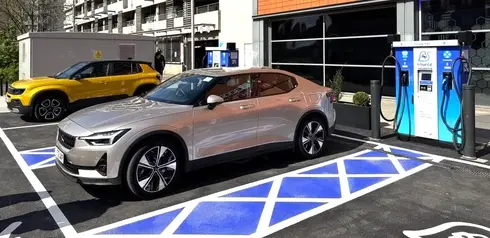As electric vehicles (EVs) continue to gain traction in the global automotive market, fast-charging networks are emerging as a pivotal factor in accelerating their adoption. In 2024, the landscape of EV charging is being redefined by technological advancements and infrastructure improvements that promise to make charging as seamless as refueling a traditional car. According to Bloomberg Green, the deployment of fast-charging stations has increased by 40% globally in the past year alone. This article will explore how these networks are transforming the EV industry and what this means for consumers and manufacturers alike.
The Rise of Fast-Charging Networks
Empowering the EV Movement
Fast-charging networks have become the backbone of the EV revolution. With prominent players like Tesla, Rivian, and Volkswagen investing heavily in expanding their charging infrastructure, the accessibility and convenience of EVs are improving dramatically. Here’s how fast-charging networks are making a difference:
- Reduced Charging Time: Fast chargers can replenish an EV’s battery to 80% in as little as 30 minutes, compared to several hours with standard home chargers.
- Increased Range Anxiety Mitigation: As fast-charging stations become ubiquitous, the fear of running out of power is diminishing, encouraging more drivers to switch to EVs.
- Enhanced Road Trip Feasibility: With networks like Tesla’s Supercharger and Electrify America expanding across highways, long-distance travel in EVs is more practical than ever.
Key Players in Charging Technology
The competition among companies to dominate the fast-charging sector is fierce. Here’s a look at some of the frontrunners:
- Tesla Supercharger Network: Known for its speed and reliability, Tesla’s network is expanding globally, with plans to open up to non-Tesla vehicles.
- Electrify America: With a focus on ultra-fast charging, Electrify America aims to deploy over 10,000 chargers by the end of 2024.
- IONITY: Backed by automotive giants like Volkswagen and Hyundai, IONITY is rapidly expanding its presence across Europe, offering up to 350 kW charging speeds.
Advances in Charging Technology
The Future of Battery Technology
Battery technology is a critical component in the advancement of fast-charging networks. Innovations in this field are helping to enhance the efficiency and speed of charging:
- Solid-State Batteries: Promising faster charging times and greater energy density, these batteries could become mainstream by the late 2020s, according to MIT Technology Review.
- Silicon Anode Batteries: Offering higher capacity and quicker charging, they are expected to hit the market by 2025, as reported by Battery University.
Smart Charging Solutions
Smart charging technology is playing a crucial role in optimizing the charging process. Features such as dynamic load management and vehicle-to-grid (V2G) capabilities are making EVs more integrated with energy systems:
- Dynamic Load Management: This technology adjusts the power delivery based on grid demand, ensuring efficient energy use.
- Vehicle-to-Grid (V2G): Allows EVs to return electricity to the grid, helping to stabilize energy supply and reduce costs.
Practical Tips for EV Owners
How to Maximize Your Charging Experience
For new and seasoned EV owners, understanding how to make the most of fast-charging networks is essential. Here are some tips to enhance your charging experience:
- Plan Your Route: Use apps like PlugShare or A Better Routeplanner to locate fast-charging stations along your journey.
- Optimize Charging Times: Charge during off-peak hours when electricity rates are lower, and stations are less crowded.
- Maintain Battery Health: Avoid frequent fast charging to extend battery lifespan, and aim to keep the charge between 20% and 80%.
Where to Find the Best Charging Deals
Finding the best charging deals can save you time and money. Here’s how:
- Membership Programs: Consider joining a charging network’s membership program for discounted rates and perks.
- Public Charging Incentives: Keep an eye out for government incentives or subsidies on public charging.
- Compare Network Rates: Use comparison tools to find the most cost-effective charging options in your area.
Conclusion: The Road Ahead
Fast-charging networks are undoubtedly revolutionizing EV adoption in 2024. By reducing charging times and enhancing accessibility, these networks are making electric vehicles a more viable option for the masses. As companies continue to innovate and expand their infrastructure, the future of sustainable mobility looks promising. Are you ready to join the electric revolution? Share your thoughts and experiences in the comments below!
As we look to the future, the continued evolution of fast-charging networks and battery technology will further accelerate the transition to electric vehicles. This shift not only promises a cleaner environment but also a more connected and efficient transportation system. Stay informed and be part of this exciting journey towards a sustainable future.

